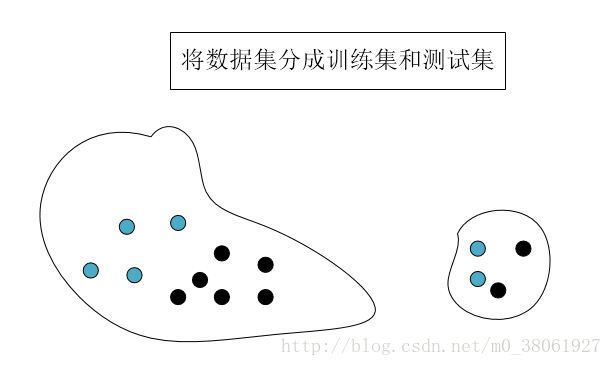python中数据集划分函数StratifiedShuffleSplit的使用
文章开始先讲下交叉验证,这个概念同样适用于这个划分函数
1.交叉验证(Cross-validation)
交叉验证是指在给定的建模样本中,拿出其中的大部分样本进行模型训练,生成模型,留小部分样本用刚建立的模型进行预测,并求这小部分样本的预测误差,记录它们的平方加和。这个过程一直进行,直到所有的样本都被预测了一次而且仅被预测一次,比较每组的预测误差,选取误差最小的那一组作为训练模型。下图所示
2.StratifiedShuffleSplit函数的使用
官方文档
用法:
from sklearn.model_selection import StratifiedShuffleSplit
StratifiedShuffleSplit(n_splits=10,test_size=None,train_size=None, random_state=None)2.1 参数说明
参数 n_splits是将训练数据分成train/test对的组数,可根据需要进行设置,默认为10
参数test_size和train_size是用来设置train/test对中train和test所占的比例。例如:
1.提供10个数据num进行训练和测试集划分
2.设置train_size=0.8 test_size=0.2
3.train_num=num*train_size=8 test_num=num*test_size=2
4.即10个数据,进行划分以后8个是训练数据,2个是测试数据
注*:train_num≥2,test_num≥2 ;test_size+train_size可以小于1*
参数 random_state控制是将样本随机打乱
2.2 函数作用描述
1.其产生指定数量的独立的train/test数据集划分数据集划分成n组。
2.首先将样本随机打乱,然后根据设置参数划分出train/test对。
3.其创建的每一组划分将保证每组类比比例相同。即第一组训练数据类别比例为2:1,则后面每组类别都满足这个比例
2.3 具体实现
from sklearn.model_selection import StratifiedShuffleSplit
import numpy as np
X = np.array([[1, 2], [3, 4], [1, 2], [3, 4],
[1, 2],[3, 4], [1, 2], [3, 4]])#训练数据集8*2
y = np.array([0, 0, 1, 1,0,0,1,1])#类别数据集8*1
ss=StratifiedShuffleSplit(n_splits=5,test_size=0.25,train_size=0.75,random_state=0)#分成5组,测试比例为0.25,训练比例是0.75
for train_index, test_index in ss.split(X, y):
print("TRAIN:", train_index, "TEST:", test_index)#获得索引值
X_train, X_test = X[train_index], X[test_index]#训练集对应的值
y_train, y_test = y[train_index], y[test_index]#类别集对应的值
运行结果:
从结果看出,1.训练集是6个,测试集是2,与设置的所对应;2.五组中每组对应的类别比例相同
from:https://blog.csdn.net/m0_38061927/article/details/76180541

